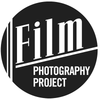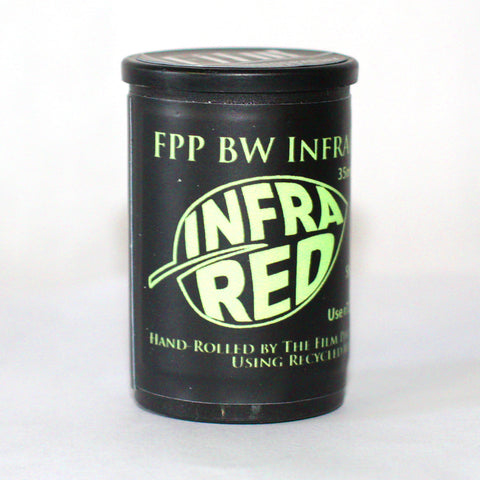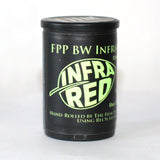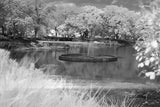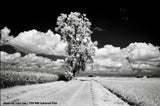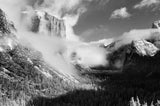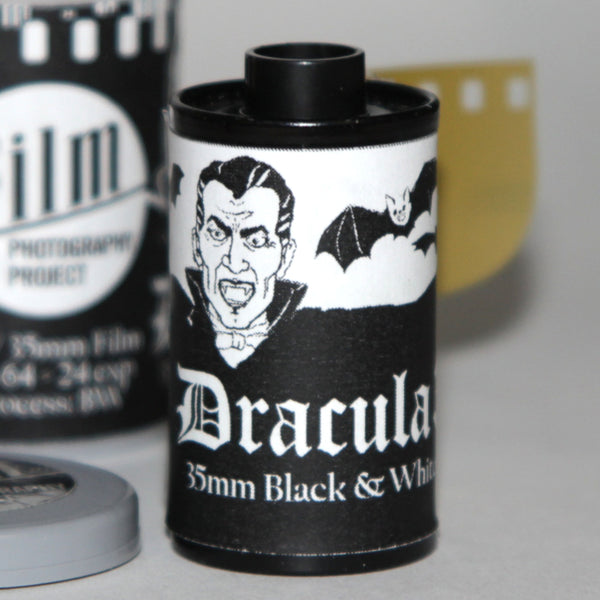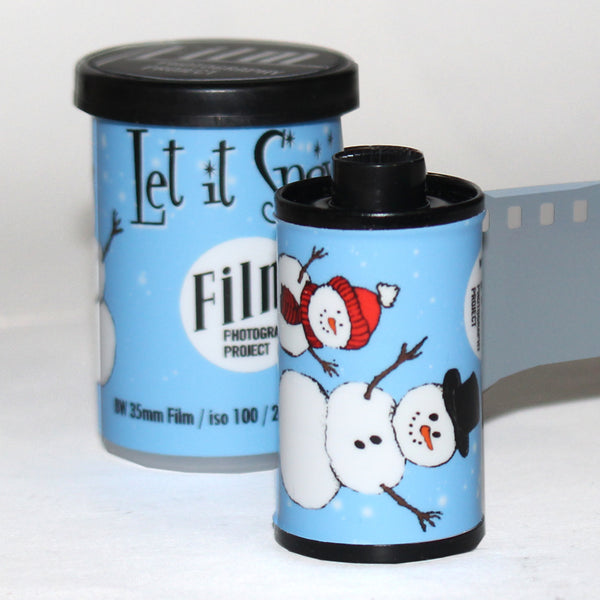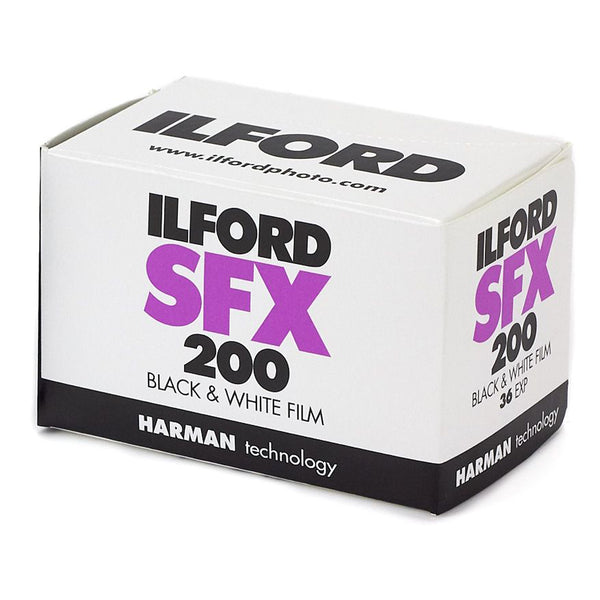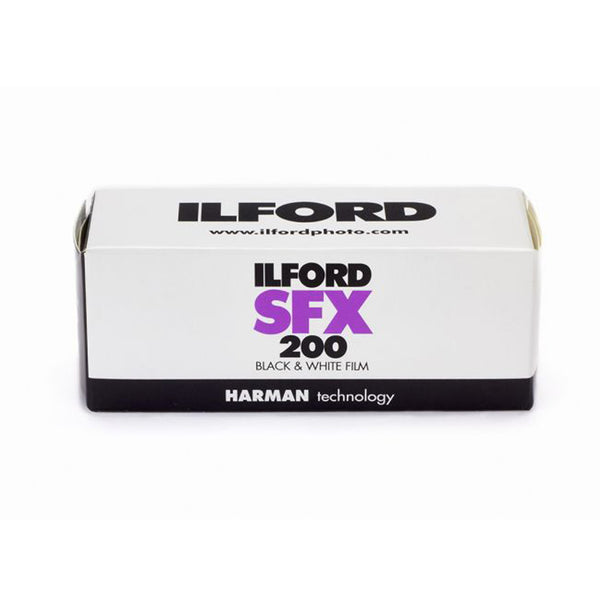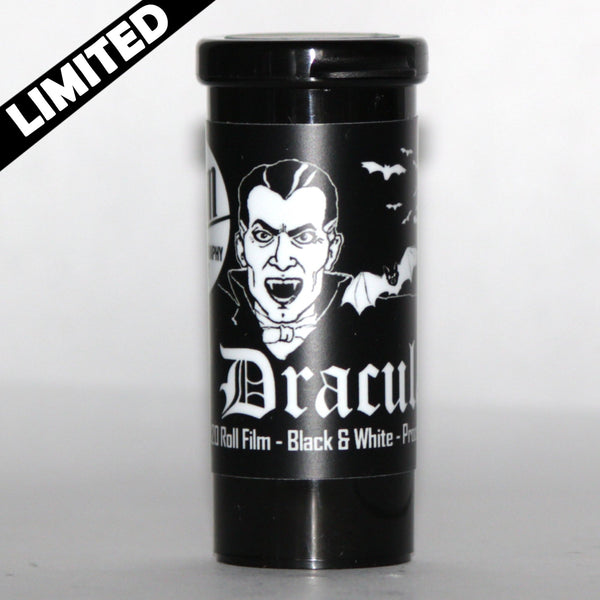35mm Infrared Film - FPP BW IR (1 Roll)
FPP BW INFRARED film
1 Roll / Polyester Base / 35mm / 200 iso / 24 exp / Process: BW
PLEASE READ ALL OF THE INFORMATION ON THIS PAGE BEFORE PURCHASING THIS SPECIAL FILM.
Add drama to your landscape photography with FPP BW INFRARED 35mm film.
With its 700-850nm infrared range and 200 iso, this panchromatic, medium contrast black and white film has pleasing grain and will produce extraordinary results with a r72 filter.
- A panchromatic 35mm BW film
- Important to know that rolls may have some emulsion pitting (pictured below) when using the r72 filter. While this will not occur on all rolls, we wanted you to know that this is inherent to the emulsion and you may experience these results in some of your frames.
- Use r72 filter in broad daylight for infrared effect (#25 red filter also an option for less dramatic effects)*
- If you have an automatic camera (like a Canon AE-1 Program) - you can set your ISO to 200 and shoot in program mode with your filter on.
- 700 – 850 nm infrared wavelength
- Load in darkness (or very dim light)
- After shooting keep your film canister away from light
- Process: BW
- Shoot iso 200 (without filter) for everyday use

Emulsion Pitting
Colleague Mark O'Brien experienced some emulsion pitting (pictured above) when using the r72 filter. Read Mark's full review HERE.
Must be shot in broad daylight with a r72 Infrared Filter for the most dramatic results. You will lose 4-6 f-stops with a r72 filter (check your filter instruction to find out what the "filter factor" is). You can also use a 25A red and a polarizer ( or 87IR filter ) for good results. Your results will depend on the amount of IR light in the air when you shoot. Your results will vary. Again, only shoot in BRIGHT SUN.
Keep your film Light Tight! FPP BE Infrared Film is a VERY THIN polyester based film and is subject to "light piping" (also known as "flashing") when exposed to room light due to this thin base. Please load in dim light and store in a dark camera bag before and after shooting. If storing your film in fridge, freezer or home shelf, store in a light tight bag as well. What is light piping? Read our blog by Leslie Lazenby. Because this film's thin emulsion and special handling needed, we do not offer refunds or replacement rolls if you "flash" your film.

Above: Image shot by Trevor Lee on FPP BW Infrared Film
IMPORTANT TIPS for success shooting FPP BW IR:
- Keep the film in the all black plastic can before and after exposure.
- Load and unload your camera in VERY DIM light.
- If you have a film ID window on the backdoor of your camera cover it with black light proof tape.
- Cameras with IR film transport sensors (like Canon EOS type cameras) may fog your film.
- Use a r72 Infrared Filter for the most dramatic results. You can also use a 25A red and a polarizer ( or 87IR filter )for good results. Film is sensitivity on the range of wavelengths 700 - 850 nm.
- The sun is your friend, the more you have the more IR you will see.
- Use the recommended ISO of 200. Remember to compensate for the filter that you are using.
- Set your f/stop to f/16 and adjust the shutter speed for the correct exposure, remember to meter through your filter(s).
- If the light is to low to use f16 then you will have to shift your lens focus to the IR mark on the lens.
We recommended shooting at f/16 on your lens, this f/stop has enough depth of field that IR focus correction (shift) is usually not required. If you can not use f16 you can use the focus aids on your lens to adjust for IR film. Most lenses have these little red marks.
The Prime lens image shows the focus shifted. Eye focused distance was 5 feet, shift the 5 mark to above the red R marked indicator. The focus is now shifted for IR film.

The Zoom lens show the focus shifted for the corresponding zoom strength. The zoom strength is close to 50mm and the original eye focus distance of 10 feet has been shifted to over the red 50. The 85mm, 70mm, 35mm and 28mm are also all marked with their IR shifts. Zoom first, focus, then shift focus to the corresponding indicator. (Note: If you are shooting at f16 you can focus normal and not worry about IR shift focusing.)
Processing
We recommend sending your FPP BW Infrared film to thedarkroom.com for developing/scanning.
Additional Times:
HC-110 Dilution B - 7 min - 68 degrees Fahrenheit
Zone Imaging 510-Pyro (1+100) 7:00 @ 20C (Info supplied by Alex Luyckx
Good luck shooting and as always...have fun!
